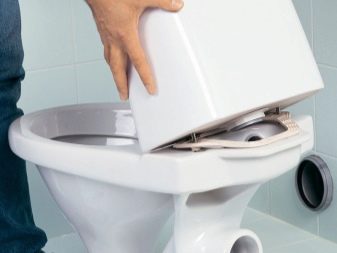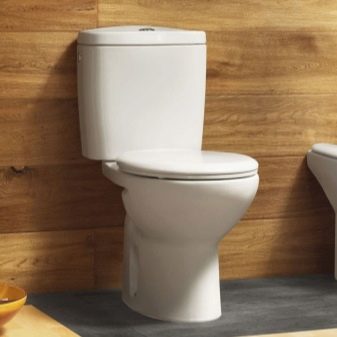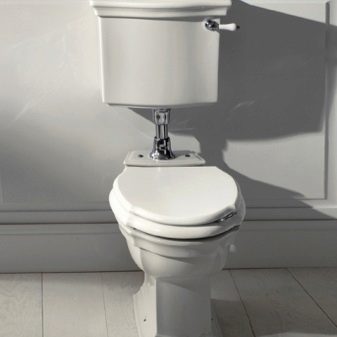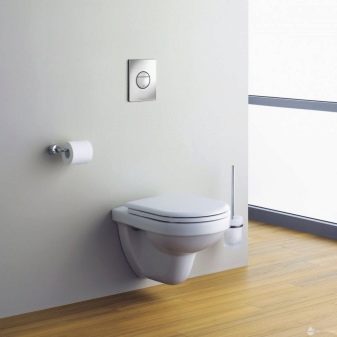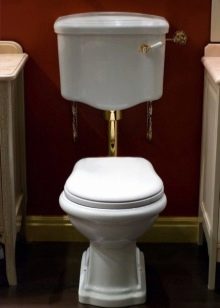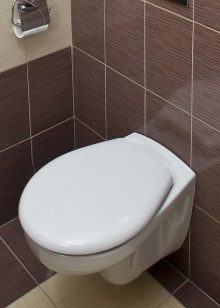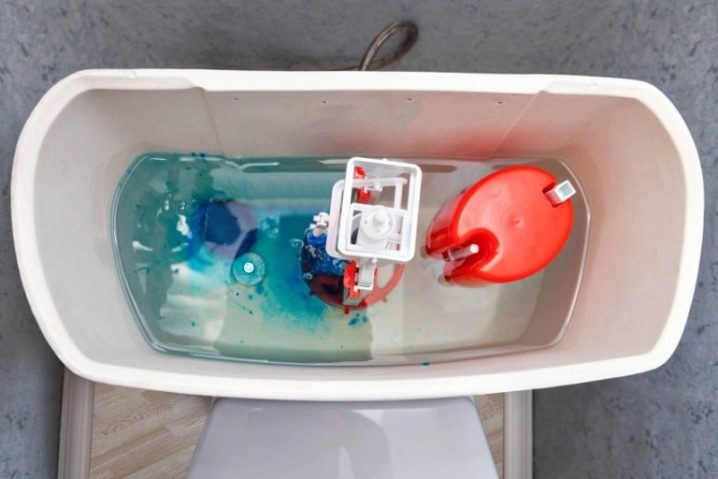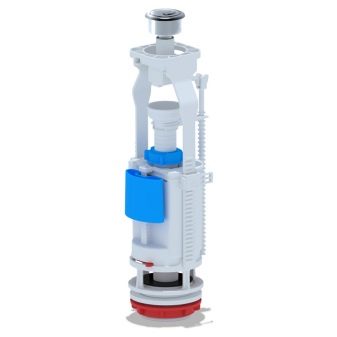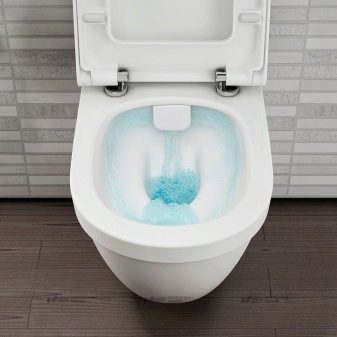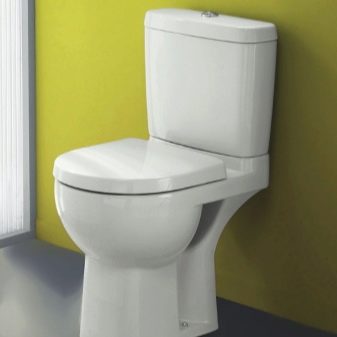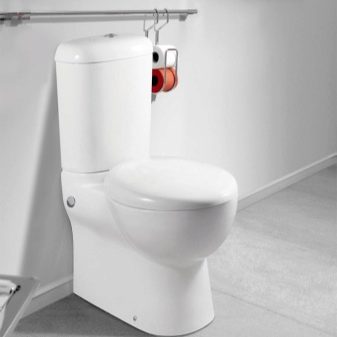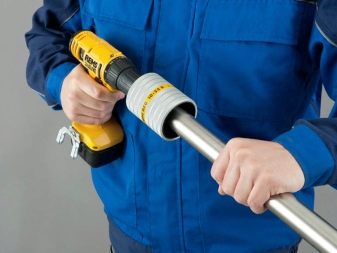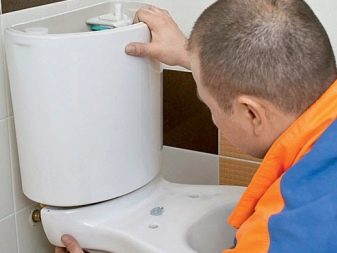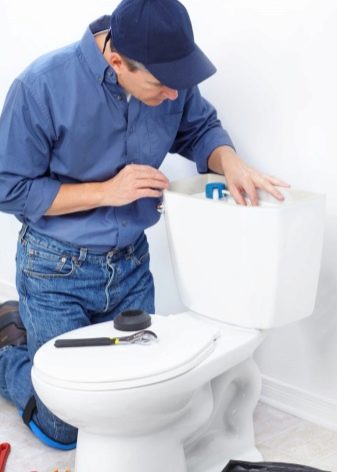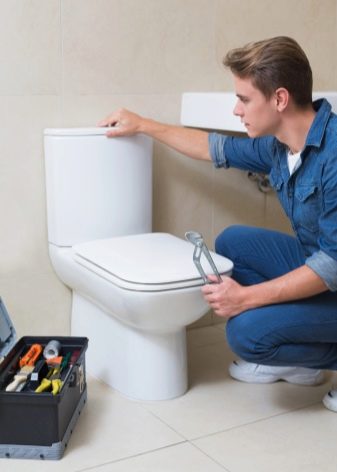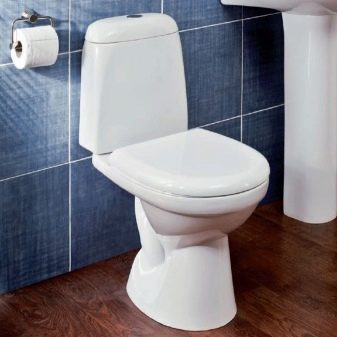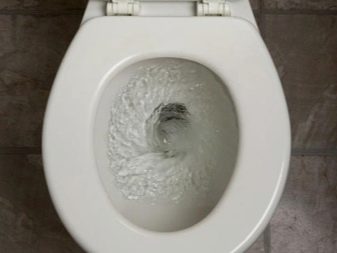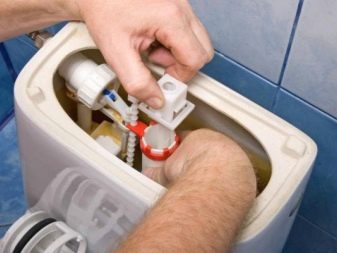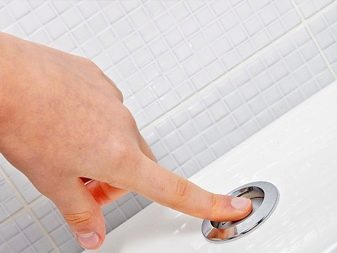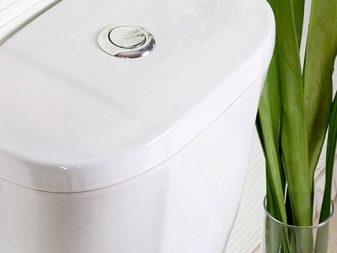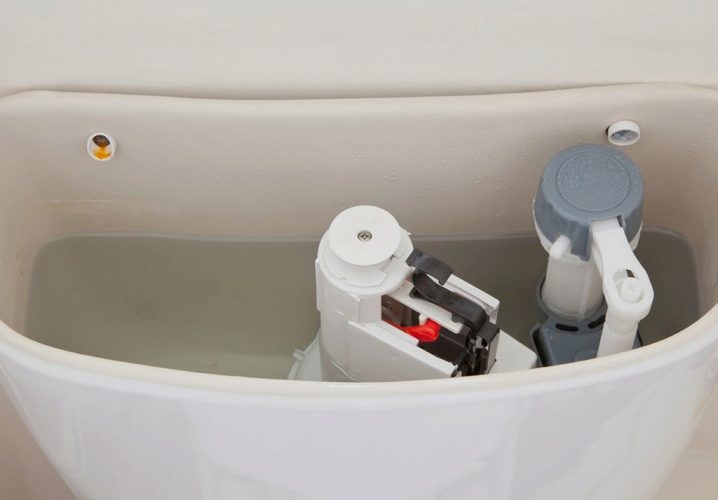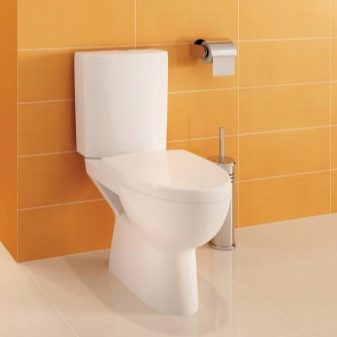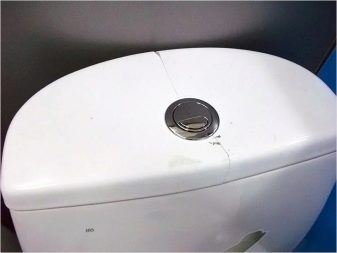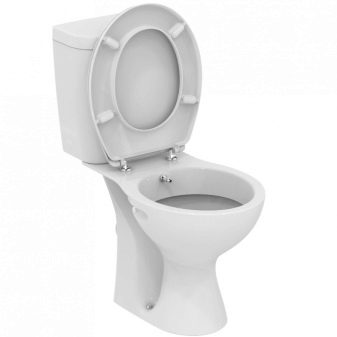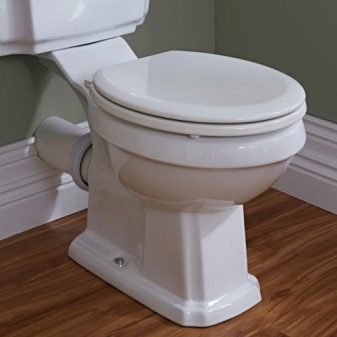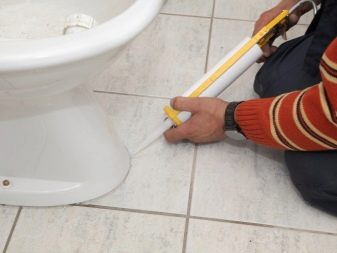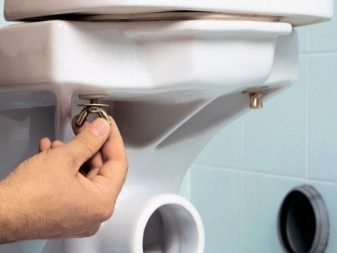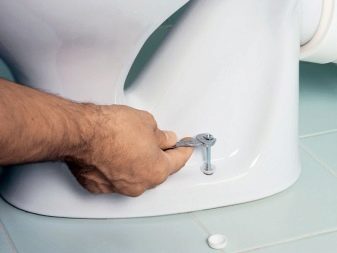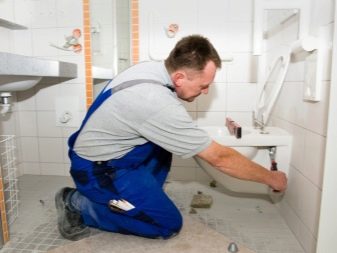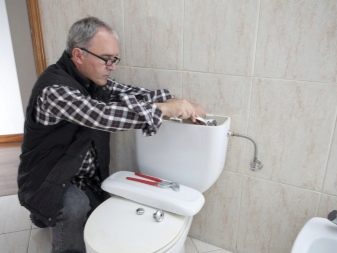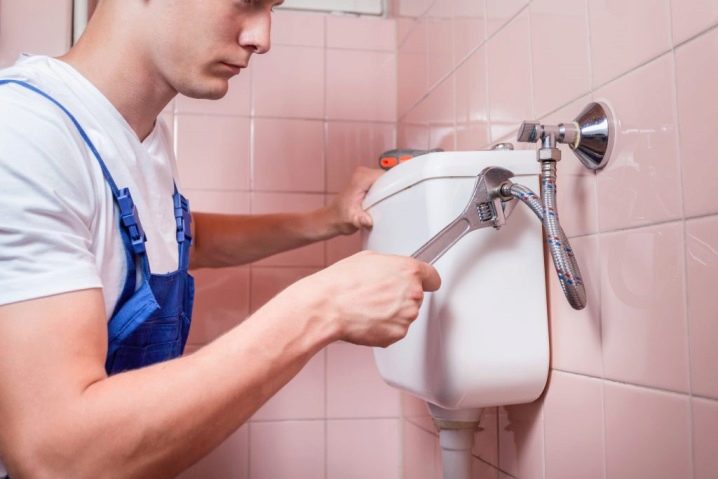Repair of a toilet bowl: types of faults and methods of troubleshooting
Without many household items, among which there is a toilet, it is sometimes impossible to do. It is not surprising that such things often fail. The reason for this is frequent operation. In this regard, the toilet breaks much faster than other plumbing items. The most vulnerable and fragile component in it is the tank, which consists of several internal elements. It is mechanical damage to internal parts that are the most frequent cause of breakage of the toilet bowl. Other reasons for which the device loses its performance include negligent treatment and non-compliance with the rules of its operation. What to do and how to fix the toilet yourself, you will learn from this article.
Special features
In order not to break the device and make a quality repair of problems, you need to know the device of the tank and its features. All toilets have a structure similar in structure. There are differences, but they are insignificant and consist in the mechanism of launching water.
There are several types of cisterns: with one or more flush buttons, as well as with a lever. Regardless of which drain system is used - lever or push-button, this does not affect the operation mechanism in principle. However, an important advantage of the device with the button system is its affordable price and quality, which is confirmed by years of operation.
There are also devices that have installation. They are separate constructions between the drain tank of the device and the bowl itself. This is one of the most advanced modifications of the bathroom, the height of the tank which may vary depending on the model of the toilet. The height of the location determines the level of remoteness of the cistern from the bowl and is often about a meter. Elements in this design are interconnected by a hidden pipe.This version of the bathroom has become very popular not only because it is high-tech, but also because, thanks to the beautiful design, it will fit well into any interior - from classic to high-tech.
The technical capabilities of these models guarantee quick flushing and good water pressure. Often, in models of separate construction, the drain tank is hidden in the attic or in mounted structures - for example, a false ceiling.
There are also variations when the drain tank is low - it is mounted in the wall near the toilet bowl itself. These elements are connected by a short pipe, and the drain mechanism is located directly at the end of the tank, but this affects the speed and head of the water.
There is also a classification of devices by type of installation.
- There are hanging tanks that are attached to the toilet bowl at a short distance and are connected by a special pipe.
- Drain compact device. Tanks of this type are mounted directly on the so-called shelf of the toilet without the use of additional devices, such as connecting tubes.
- The most complex structure is a built-in tank, which is used in the suspension devices, known as toilets with installation.Drain tank in this design is installed inside the wall.
Despite the fact that there are several types of designs of drain tanks, they have the same structure and can be represented in the form of several elements that are in constant interaction with each other.
The main one is the filling valve, which is designed to maintain the water level in the tank at a certain level. This allows the float, which is fixed to the inlet valve and controls its action. It is he who opens and closes the channel through which water enters the drain tank. It works due to the fact that when the tank is filled, it rises and opens access to supply water to the device.
The overflow valve, or the so-called "drain", operates depending on the type of toilet bowl and its parameters. Today, most toilet tanks have a special button that triggers the action of the drain valve. In other variations of this type of plumbing there is a manual control, presented in the form of a lever or a chain. If you pull them, the water supply to the toilet will begin.
Another element, without which the design of the drain tank is impossible, is overflow, designed to establish the water level for each specific device.In case of exceeding this mark, the water, due to the effect of overflow, will not pour out through the walls of the tank, but will flow into the sewage through a special overflow pipe.
As noted above, there are several types of systems run water into the toilet. The design of tanks with automatic water release (water supply occurs after a short press of a button) works quite simply: the float is down, in the lowered position, which triggers the action of the filling valve. Thanks to this simple manipulation, the water supply through the filling valve opens. As soon as it reaches the required level, the float rises, thereby blocking the flow. The flushing system in this design is controlled by pressing a button that is located on the upper end of the drain tank: the overflow valve opens and lets water flow directly into the toilet itself.
Often, manufacturers install several drain buttons in their devices, which greatly complicates the structure of the drain tank and its operation. Despite this, devices of this type are designed for reasonable and economical water consumption,because when you press one of the buttons there is only a partial discharge of water into the toilet. For complete drainage it is necessary to hold down the second button. Thus, a person can regulate the necessary water consumption by himself, which will have a positive effect on his budget.
Manufacturers create a variety of options for devices that are designed for toilet rooms of various sizes. For smaller toilets, it is common to use new models of toilet bowls, in which the drain tanks are equipped with a bottom connection of the water line. The main feature of this device is the presence of a valve from a special membrane. It opens under the influence of a water pressure and, having slightly opened, carries out water supply in the device. In the event that water reaches a certain level, this diaphragm valve closes and stops water flow. This is due to the pressure that the float exerts on the piston rod, due to which the diaphragm valve closes.
Having familiarized with the device of a drain tank, the master will be able to assess the problem and repair typical malfunctions that do not require a call from specialists.
Required tools
Repair of a toilet bowl is not the most difficult procedure, which requires only care, a certain skill, time and availability of the simplest tools. Among them are pliers, a set of keys, a universal screwdriver, side cutters - these ordinary tools will be found in every home and will be indispensable assistants in plumbing work.
Let us consider in more detail some atypical devices that may be required when repairing plumbing. Among them is a tube ratchet that allows you to clean the pipes - for example, remove the remnants of metal remaining after cutting the pipe. This tool can be replaced by a countersink. Also needed are coolant sprays and special lubricating oils.
If the above tools are not available, then you can contact the building materials store and purchase a ready-made plumbing kit, which will provide the home master with all the necessary appliances. Lack of tools may adversely affect the quality of repairs.
How to repair your own hands?
Despite the fact that the device of this sanitary device is a fairly simple design, it can be subject to mechanical damage.If the toilet is broken and does not work, it is not necessary to call a team of specialists, because you can fix it yourself.
Before repairing it is necessary to make correct diagnostics of problems. This stage of work is the most important, since it involves an assessment of the state of the device, and to make a mistake at this stage is to do the work poorly.
However, self-repairing plumbing is a simple matter, but it requires a lot of time resources and efforts that significantly cover the finances spent on the call of the masters.
You must understand that there are several varieties of plumbing systems used in the device drain tank. The most modern of them - the lower eyeliner of water to the device. In this type of toilet cistern, the inlet mechanism, that is, the valve, is located in a special tube inside the cistern. The mechanism of operation of this device practically does not differ from the models of the old type: if the valve is open, water enters the tank. When it is filled, the float rises, acting on the valve that covers the water. The rest of the system of discharge and overflow of water remains unchanged and differs little fromclassical models: the same valve and tube are used, the latter is brought to the drain and is equipped with a regulating screw.
Based on this, you need to choose those techniques and tools that will have to be guided in the subsequent repair. The most common problems are discussed in detail below, but it is worth noting right away that most of the problems with a plumbing fixture can be resolved by adjusting the tank fittings or fully replacing the fittings.
Elimination of sanitary problems
There are many types of breakdowns. They can be more or less serious, but they all lead to the fact that the toilet comes in a damaged position and ceases to perform its functions. Often this is accompanied by increased water consumption, for example, when the device is leaking. Of course, this affects the family budget, which few people like. In order to avoid such unpleasant consequences, it is necessary to pay attention to the problem in time and to carry out high-quality repairs, which can be carried out independently, without causing a brigade of specialists.
Water leakage to the floor is one of the most common problems that consumers face. The problem arises in the old models, and in the most modern devices with a lower water inlet. A leak is connected to the sealing ring through which water flows. This element is located between the so-called shelf of the toilet and the bottom of the cistern. It often happens that the ring is out of whack - cracked or changed shape. Another possible option may be cracked gasket on the mounting bolts - they tank attached to a special shelf or the so-called bowl. In order to solve the problems of a flowing toilet bowl, it is necessary to replace the mechanisms.
When installing new hardware, professionals advise lubricating it with liquid silicone in order to prolong its operational life.
It happens that the device does not stop the water, the toilet flushes it himself, even if the flush button is not pressed. This breakage is due to the overcrowding of the drain tank. In this case, the fluid flows through the overflow pipe. This is often due to the displacement of the high-level overflow or malfunction of the float.It can lose its tightness and, therefore, it is loosely lowered onto the filling valve. Another reason may be the wear of valves. To solve this problem you need to change the float. In the event of malfunctioning valves, replace the drain.
In the event that the flush button falls, you can try without removing the tank lid, repeatedly press it again - quite often it takes its own place due to mechanical impact. If this does not happen and the button is still stuck, you need to remove the top cover, remove the retaining ring from the flush button and install a new button afterwards. Also, this problem may occur when the shaft of the button is clogged, which needs to be cleaned and installed back. For the toilet with the installation wizard advised to disassemble the push-button mechanism itself and evaluate it for the presence of breakdowns.
If the system uses a button flush mechanism, then often the problem lies in the malfunction of the built-in lever that binds the drain to where the water should flow and the buttons. In this case, you need to repair the fittings in the drain tank and the lever mechanism itself.This problem is typical not only for automatic flushing systems, but also for unions with a flush chain or handle.
In the case of a noisy filling device, you need to remove the upper end of the drain tank and examine the condition of the mechanisms inside the tank. If the toilet "beeps" and makes other unpleasant sounds, then this may be due to the disconnection of a special pipe that supplies water to the tank. This problem is most often found in toilet bowls with side water connections, where noisy water enters the device by disconnecting the tube. In order to get rid of this problem, you need to connect this tube to the fitting in the drain tank.
If the toilet does not flush, then this is due to the obstruction of water in the device. Plumbing can be repaired - it is necessary to check the inlet and clean it with a thin tool - for example, steel wiring. After that, it is washed with water and set removed from the tank valve.
In the drain tank may be a small amount of water, which will not be enough to flush. This is because some system elements are in the wrong position: for example, the float does not rise.It is necessary to study its position and adjust it.
Redecorating
During operation of the device, problems of both plumbing and aesthetic properties may arise - for example, cracks and other cosmetic problems may appear. In order to solve them, it is not at all necessary to call in a plumber or buy a new tank: any home craftsman with his own hands will be able to fix the damage and return it to its original appearance.
In order to seal the crack, it is necessary to use glue specially developed for ceramic surfaces. It helps to repair chips or cracks, but it does not give any guarantees that the problem will be completely resolved.
The crack is often formed due to the fact that there is a temperature difference, which leads to uneven and uneven distribution of the material. This, in turn, creates a large internal stress, due to which a chip or gap is created on the material. If the toilet is cracked, then mechanical damage becomes another cause of damage. Often some items fall on it, because in modern apartment buildings, quite small rooms are allocated for toilets, in which residents want to accommodate not only the bathroom itself, but also various shelves.They have household chemicals that fall, and creates a crack.
A broken section of the material on the toilet can be glued, if you use sealants of sanitary silicone, which prevents the formation of mold and mildew. Moreover, this material is characterized by high resistance to chemicals and hydraulic effects. Therefore, it is advisable to use this type of sealant for any part of the toilet and even the sewer pipe. The entire area of damage must be blocked. In order to seal the hole, it is necessary to leave a small margin and take into account the total area of the future seam.
The process of repairing mechanical damage is not complicated and consists of the following steps:
- It is necessary to take a plastic spatula and moisten it, after which the applied silicone layer is leveled by properly smearing the crack.
- Next you need to take soapy water and wash it with a spatula. This must be done quickly, before the material hardens.
- The same soap composition can be used to completely level and solidify the composition. You can smooth the material with a spatula, a piece of soap, or soaped fingers.During the execution of these manipulations, it is important to remember about the force of pressure: you should not press too hard on the sealant.
- You need to know that within 10-15 minutes after applying the material it can deform and slightly change the shape. In this regard, it is necessary to give a smoothness to the seamed seam and polish it.
Tips and tricks
To fix plumbing problems, you need to pay attention to some of the nuances that can greatly affect the result.
First of all, you need to carefully treat the components of the device.This is especially true of the process of removing the cover from the toilet bowl. It is important to understand that designs with a push-button mechanism are disassembled only in the case of temporary dismantling of a button.
It is necessary to turn off the water for the period of repair, then it is necessary to remove water from the drain tank. Next, unscrew the nut located near the flush button and remove the cover. It is necessary to follow this sequence constantly, otherwise improper removal of the upper end may be the cause of new breaks in the toilet bowl.
Another possibility to remove the lid of the cistern is that it is necessary to press a button and turn the ring, which is located around the flush button.If difficulties arise, then you need to consider the inner bezel by pressing the button to the limit. There are special holes on the inside. Next, you need to take a screwdriver and turn the button ring to it. After that, the button is twisted and removed the button. Now you can remove the cover, because the button is now not built into the end and does not prevent the removal of the cover.
You can adjust the amount of incoming water into the toilet. It is necessary to remove the cover from the tank and make some simple manipulations on changing the position of the float, which determines the water level.
If the problems are more complex and occurred with the plumbing of a new generation, it is better to call the master, since it is he who, with special knowledge and skills, will be able to correctly identify the problem and resolve it.
Plumbing should be given due attention, as the recently purchased toilet may be damaged due to improper installation, improper connection of pipes, hoses to the device. On the other hand, old appliances can often encounter problems that may be insignificant at first glance, but can be disastrous for plumbing if it is not repaired.
Breakdowns can be of different kinds, but if the diagnosis is difficult, then you should contact a certified specialist who will help you understand the problem. Delay in the event of a device breakdown can cost not only a threat to the wallet, but also the well-being of the dwelling - both one’s own and one’s neighbor’s.
See how to fix the toilet sink in the next video.




